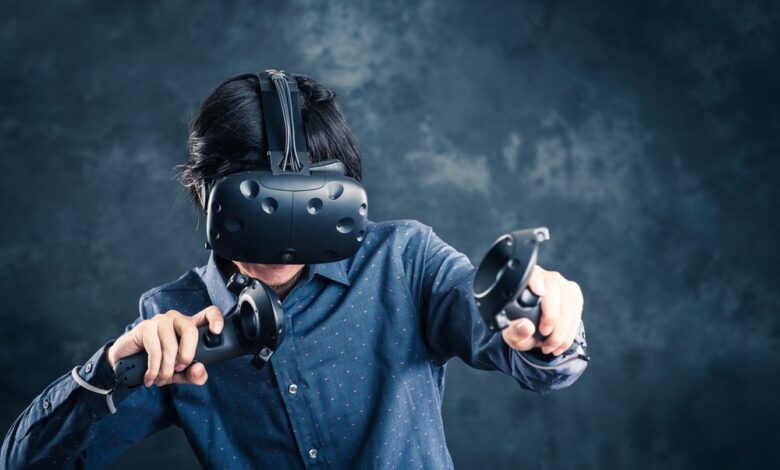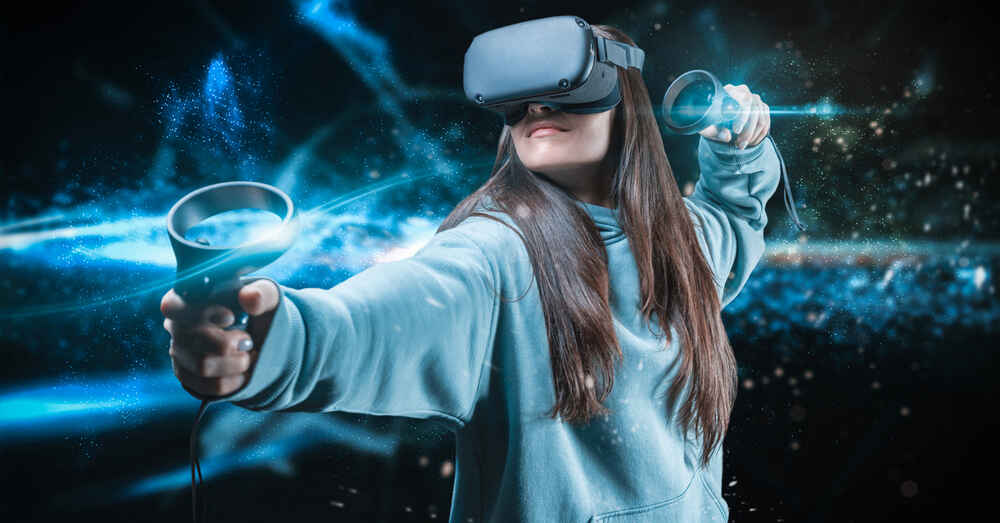Virtual Reality Gaming Pushes Boundaries to New Era

In the fast-paced, ever-evolving world of 2025, the digital frontier is expanding in ways we never thought possible. Video games are no longer a flat, two-dimensional experience on a screen; they are a fully immersive, three-dimensional reality that we can step into and explore. This revolution, known as Virtual Reality (VR) gaming, is a profound leap forward in interactive entertainment, redefining what it means to play and experience a game. It’s a paradigm shift that is being driven by a convergence of cutting-edge hardware, revolutionary software, and a new generation of content creators who are pushing the boundaries of what is possible. This comprehensive guide will take you on an in-depth journey through the future of VR gaming. We will explore the core technologies that make it possible, analyze its profound impact on the gaming industry, and provide a clear roadmap for what comes next. By the end of this article, you will have a clear and actionable understanding of the forces shaping the future of interactive entertainment.
How VR Gaming Works

At its heart, VR gaming is a marvel of technological engineering. It is a complex process that relies on a seamless interaction between several key components to deliver a high-quality, immersive, and lag-free experience.
A. The Head-Mounted Display (HMD)
The Head-Mounted Display (HMD) is the gateway to the virtual world. It is a headset that you wear over your eyes, with a screen for each eye and a powerful set of motion sensors that track your head’s movement.
- The Display: The displays in a modern HMD are a testament to the power of modern technology. They are high-resolution, high-refresh-rate displays that are so clear and so fast that they can trick your brain into thinking you are in a real world. The quality of these displays is what determines the visual fidelity of the virtual world.
- The Motion Sensors: The motion sensors in an HMD are a critical component for creating an immersive experience. They track the movement of your head in all directions, allowing the virtual world to react to your every move. This is what creates a sense of presence, the feeling that you are actually in the virtual world.
- The Audio: The audio is a key component of an immersive VR experience. A great HMD has a set of high-quality headphones that can deliver a 3D audio experience, which can simulate sound from all directions, including from above and below.
B. The Controllers
The controllers are your primary interface with the virtual world. They are the tools that allow you to interact with the objects and characters in the virtual world.
- Haptic Feedback: The controllers of a modern VR system are a testament to the power of modern technology. They have a powerful haptic feedback system that can simulate a wide range of sensations, from the rumble of an explosion to the feel of a bowstring being pulled.
- Finger and Hand Tracking: The controllers of a modern VR system can track the movement of your fingers and hands, allowing for a more natural and intuitive way to interact with the virtual world. This is what creates a sense of presence and a deeper level of immersion.
- Cross-Platform Compatibility: The controllers of a modern VR system are often compatible with a wide range of games and experiences. This is a great way for a developer to create a game that can be played by a wide range of gamers, regardless of the HMD they own.
C. The Computer or Console
The computer or console is the engine that processes the virtual world and sends it to the HMD.
- Massive Computing Power: A modern VR experience requires a massive amount of computing power. The game must be rendered at a high resolution and a high frame rate, and the computer must be able to process the data from the HMD and the controllers in real-time.
- The “Virtual Console”: The computer or console is the virtual console that runs the game and sends it to the HMD. This is a key component of the VR ecosystem, as it is the engine that powers the virtual world.
- The “Round Trip”: A VR gaming session involves a constant “round trip” of data. Your head movements and controller inputs are sent to the computer, the computer processes them and updates the virtual world, and the new video and audio output is sent back to your HMD. Minimizing this latency is the single biggest challenge in VR gaming, and companies are constantly innovating to reduce it.
The Impact on the Gaming Ecosystem

VR gaming is not just a new way to play; it is a force that is fundamentally reshaping the gaming industry, from how games are monetized to how they are developed.
A. The End of the “Screen”
For decades, the gaming industry has been defined by a screen. VR gaming could change this forever.
- Shifting the Focus: The focus is no longer on the screen you own but on the world you can step into. The key differentiator will be the quality of the virtual world, the level of immersion, and the seamlessness of the experience.
- The Rise of Immersive Experiences: VR gaming is a natural fit for a cinematic and story-driven single-player experience. A developer can create a virtual world that is so immersive and so detailed that you feel like you are actually in the world.
B. New Opportunities for Developers and Publishers
VR gaming is opening up new creative and business opportunities for game developers and publishers.
- Broader Audience Reach: By removing the barrier of expensive hardware, VR gaming allows developers to reach a much larger audience. A small indie studio can now have its game played by millions of people who don’t own a high-end VR system.
- Innovation in Game Design: VR gaming allows for a new level of innovation in game design. Developers can create games that are more physically and mentally demanding, with a focus on a realistic and immersive experience.
- The Metaverse: The metaverse is emerging as the ultimate virtual world. VR gaming is a key gateway to this metaverse, providing a powerful platform for social experiences, virtual events, and a new kind of interactive entertainment.
C. The Challenge of Motion Sickness and the Path Forward
Despite its immense potential, VR gaming faces several challenges that must be overcome for it to become a mainstream reality.
- The Challenge of Motion Sickness: Motion sickness is a common problem in VR gaming, caused by a disconnect between what your eyes see and what your body feels. This can be a major barrier to entry for many gamers.
- The Path Forward: The solution lies in a combination of hardware and software. The latest HMDs have a high refresh rate and a low latency, which can help reduce motion sickness. Developers are also creating games with a focus on a more comfortable and a more immersive experience, with a focus on a smooth and a seamless flow of the virtual world.
- The Challenge of Cost: The cost of a high-end VR system can be a major barrier to entry for many gamers. This is a problem that will be solved by a combination of a lower cost for the hardware and a powerful subscription model that makes gaming more affordable.
The Future of VR Gaming
The future of VR gaming is even more exciting than the present. The technology is evolving at an incredible pace, and the future promises an even deeper integration of VR with our daily lives.
- Haptic Suits: The next generation of VR accessories will include haptic suits that can simulate the feel of being in the virtual world. A haptic suit can simulate the feel of a punch, the feel of a gunshot, or the feel of a virtual hug. This is a game-changer for a VR experience, as it will create a new level of immersion and a new level of realism.
- The Rise of the Metaverse: The metaverse is emerging as the ultimate virtual world. The next generation of VR will be a key gateway to this metaverse, providing a powerful platform for social experiences, virtual events, and a new kind of interactive entertainment.
- AI-Powered VR: The next generation of VR will have AI-powered characters that are more intelligent and more realistic than ever before. This will lead to a new level of immersion and a more dynamic and unpredictable VR world.
- More Accessible VR: The new generation of VR is designed to be more accessible to a wider audience, with a focus on a more intuitive user experience and a powerful subscription model that makes gaming more affordable. This is a major step toward democratizing access to interactive entertainment.
Conclusion
VR gaming is not just a passing trend; it is the next great evolution in interactive entertainment. It is a powerful force that is democratizing access to gaming, breaking down the barriers of expensive hardware, and offering a new level of convenience and accessibility. The journey to a fully realized VR ecosystem is an ongoing one, with companies constantly innovating to overcome the challenges of motion sickness and cost.
The future of VR is one where the game is always with you, no matter where you are or what device you are using. It is a world where a massive library of games is available at your fingertips for a single monthly fee, a world without downloads, updates, or physical discs. The console wars are coming to an end, replaced by a new kind of rivalry based on the quality of the service and the richness of the game library. By embracing this new paradigm, the gaming industry is poised for an unprecedented period of growth and innovation. The future of gaming is in the cloud, and the journey is just beginning.
